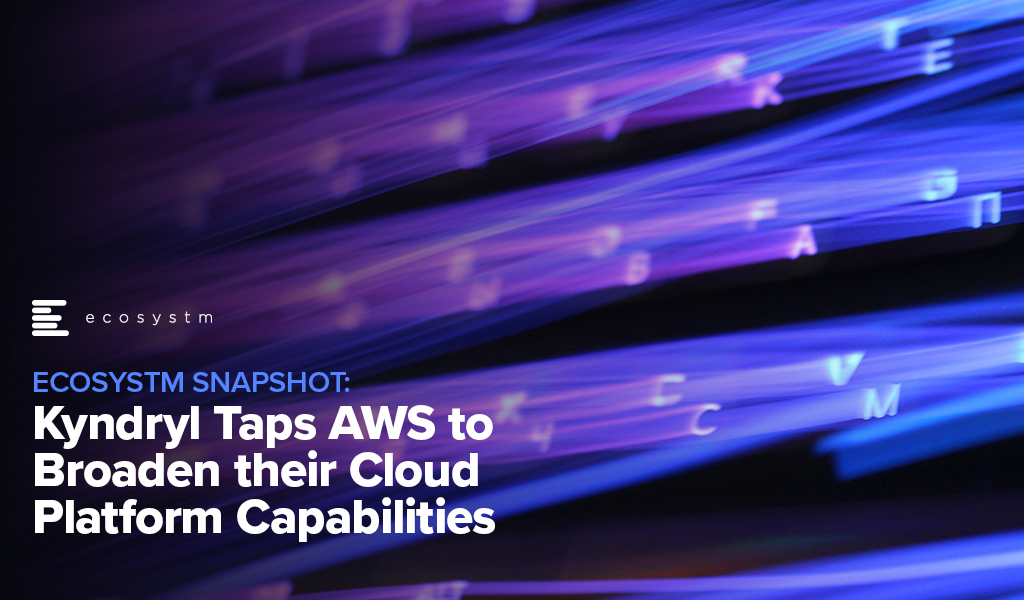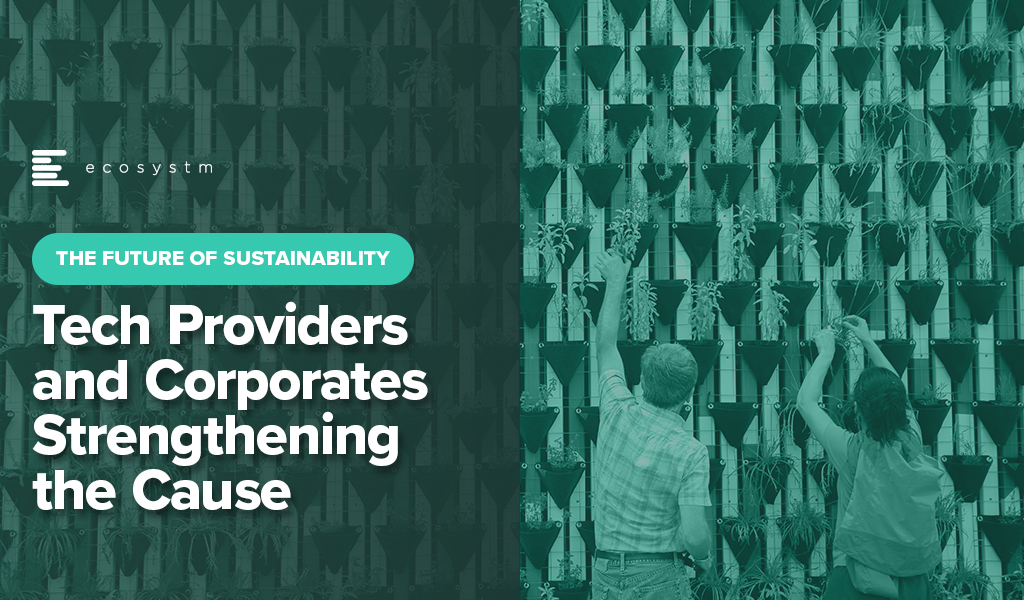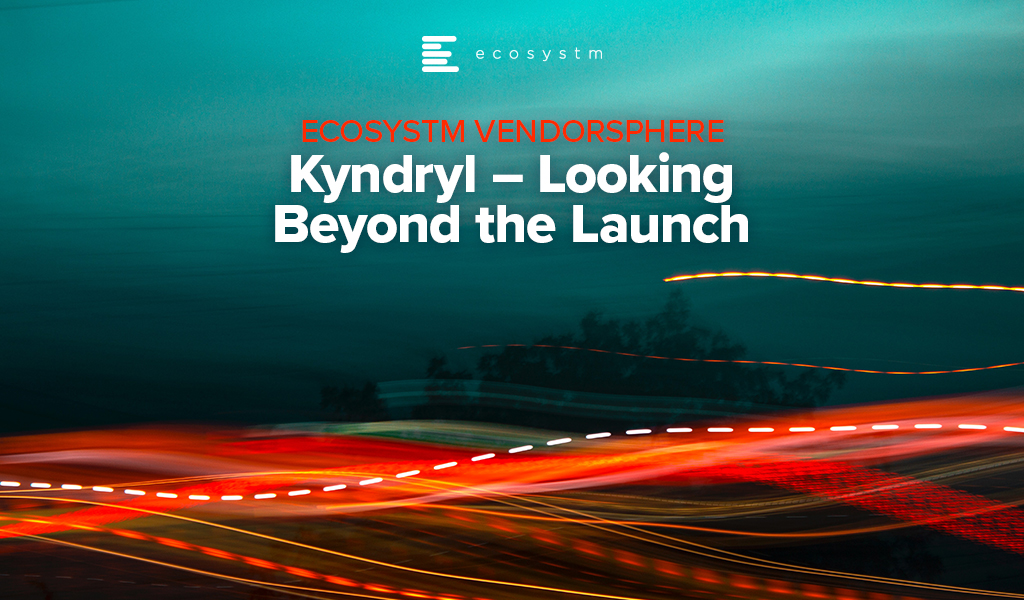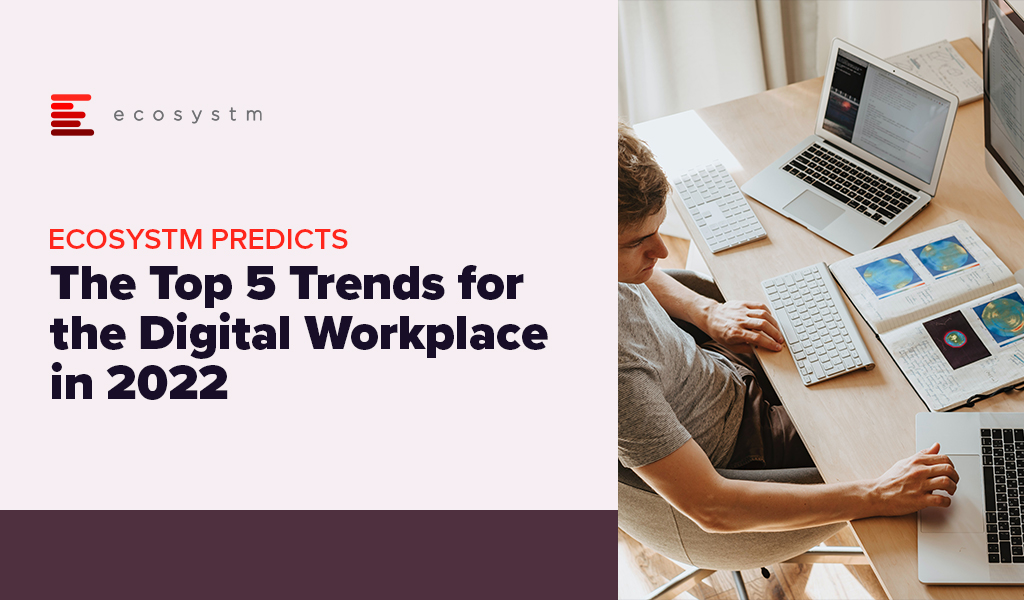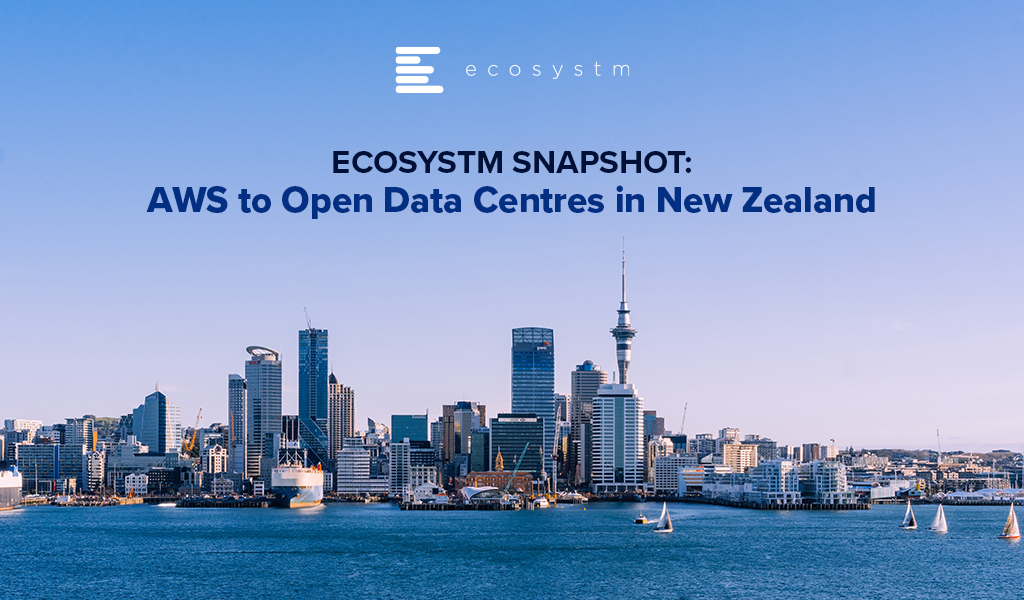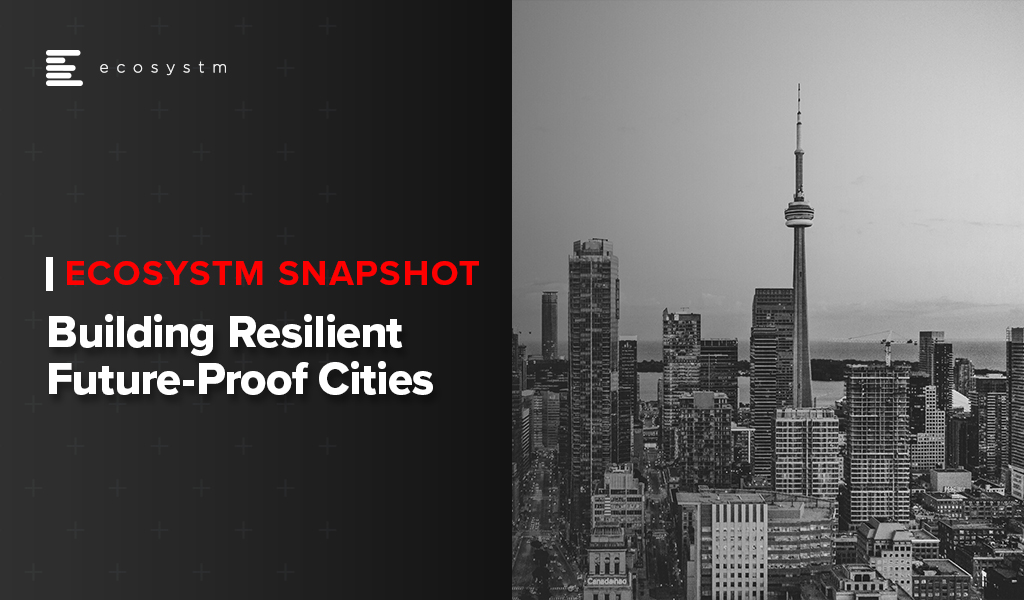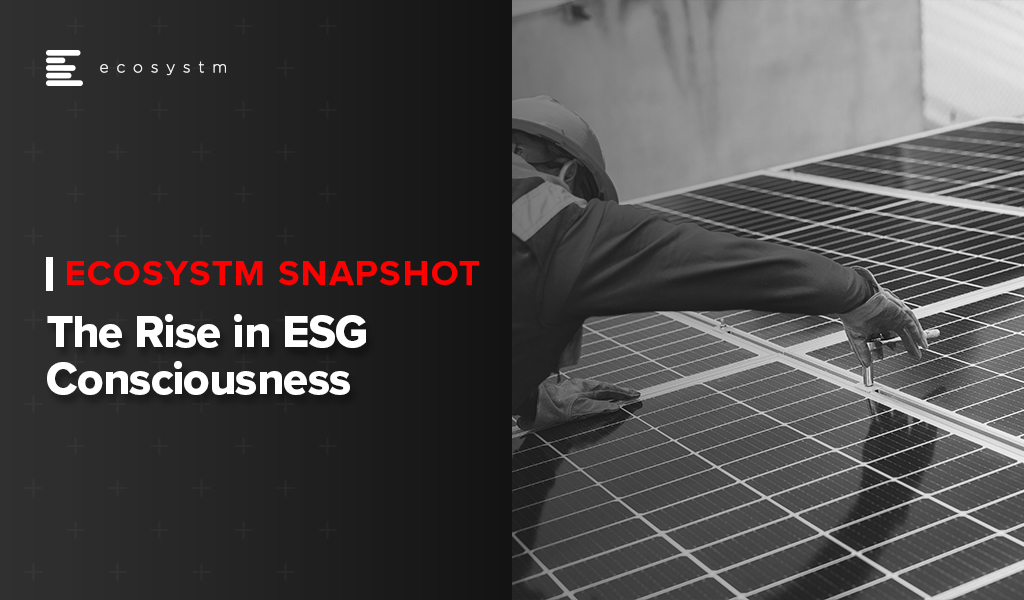Last week, Kyndryl became a Premier Global Alliance Partner for AWS. This follows other recent similar partnerships for Kyndryl with Google and Microsoft. This now gives Kyndryl premier or similar partner status at the big three hyperscalers.
The Partnership
This new partnership was essential for Kyndryl to provide legitimacy to their independent reputation and their global presence. And in many respects, it is a partnership that AWS needs as much as Kyndryl does. As one of the largest global managed services providers, Kyndryl manages a huge amount of infrastructure and thousands of applications. Today, most of these applications sit outside public cloud environments, but at some stage in the future, many of these applications will move to the public cloud. AWS has positioned itself to benefit from this transition – as Kyndryl will be advising clients on which cloud environment best suits their needs, and in many cases Kyndryl will also be running the application migration and managing the application when it resides in the cloud. To that end, the further investment in developing an accelerator for VMware Cloud on AWS will also help to differentiate Kyndryl on AWS. With a high proportion of Kyndryl customers running VMware, this capability will help VMware users to migrate these workloads to the cloud and run core businesses services on AWS.
The Future
Beyond the typical partnership activities, Kyndryl will build out its own internal infrastructure in the cloud, leveraging AWS as its preferred cloud provider. This experience will mean that Kyndryl “drinks its own champagne” – many other managed services providers have not yet taken the majority of their infrastructure to the cloud, so this experience will help to set Kyndryl apart from their competitors, along with providing deep learning and best practices.
By the end of 2022, Kyndryl expects to have trained more than 10,000 professionals on AWS. Assuming the company hits these targets, they will be one of AWS’s largest partners. However, experience trumps training, and their relatively recent entry into the broader cloud ecosystem space (after coming out from under IBM’s wing at the end of 2021) means they have some way to go to have the depth and breadth of experience that other Premier Alliance Partners have today.
Ecosystm Opinion
In my recent interactions with Kyndryl, what sets them apart is the fact that they are completely customer-focused. They start with a client problem and find the best solution for that problem. Yes – some of the “best solutions” will be partner specific (such as SAP on Azure, VMware on AWS), but they aren’t pushing every customer down a specific path. They are not just an AWS partner – where every solution to every problem starts and ends with AWS. The importance of this new partnership is it expands the capabilities of Kyndryl and hence expands the possibilities and opportunities for Kyndryl clients to benefit from the best solutions in the market – regardless of whether they are on-premises or in one of the big three hyperscalers.

COP26 has firmly put environmental consciousness as a leading global priority. While we have made progress in the last 30 odd years since climate change began to be considered as a reality, a lot needs to be done.
No longer is it enough for only governments to lead on green initiatives. Now is the time for non-profit organisations, investors, businesses – corporate and SMEs – and consumers to come together to ensure we leave a safer planet for our children.
February saw examples of how technology providers and large corporates are delivering on their environmental consciousness and implementing meaningful change.
Here are some announcements that show how tech providers and corporates are strengthening the Sustainability cause:
- IBM launches Sustainability Accelerator Program
- Microsoft boosts their Sustainability offerings by extending extend their EID tool for Microsoft 365
- Salesforce officially announce sustainability as a core company value
- Google enables Sustainable AIOps
- The Aviation industry (Southwest Airlines, ANA, Norwegian Air and Singapore Airlines) appears to be making a concerted effort to reduce carbon footprint.
Read on to find more.
Click here to download a copy of The Future of Sustainability as a PDF.

Since officially separating from IBM in November last year, Kyndryl has been busy cementing some heavyweight partnerships. The alliances with Microsoft, Google, and VMware demonstrate its intention to build hybrid cloud solutions with whoever it needs to, rather than favouring the Big Blue or Red Hat. The SAP tie-up hints at a future of migrating ERP workloads to the cloud and even an eye on moving up the application stack. Last week Kyndryl announced it is working with Nokia to provide private 5G and LTE networks to enable Industry 4.0 solutions. The first customer reference for the partnership is Dow, deploying both real-world and proof-of-concept applications for worker safety and collaboration and asset tracking.
The Partnership
Kyndryl has a competitive networking services unit, particularly in partnership with Cisco. Its focus has been on SD-WAN, campus networks, and network management as part of broader cloud services deals. This 5G partnership with Nokia is its first serious effort to work with one of the major carrier-grade vendors using cellular technology. It creates an opportunity for Kyndryl to position itself as a provider of services that underpin IoT and edge applications, rather than only cloud, which has until now been its main strength.
Prior to the Kyndryl announcement, Nokia was already developing private 5G solutions under the moniker Digital Automation Cloud (DAC). A key customer is Volkswagen, using the network to connect robots and wireless assembly tools. Over-the-air vehicle updates are also tested over the private network. Volkswagen operates in a dedicated 3.7-3.8 GHz band, which was allocated by the Federal Network Agency in Germany. This illustrates a third option for accessing spectrum, which will become an important consideration in private 5G rollouts.
Private 5G Use Cases
Private 5G has several benefits such as low latency, long-range, support for many users per access point, and provision for devices that are mobile due to handover. It is unlikely that it will completely replace other technologies, like wireless LAN, but it is very compelling for certain use cases.
Private 5G is useful on large sites, like mines, ports, farms, and warehouses where connected machines are moving about or some devices – like perimeter security cameras – are just out of reach. Utilities, like power, gas, and water, with infrastructure that needs to be monitored over long distances, will also start looking at it as a part of their predictive maintenance and resiliency systems. Low latency will become increasingly important as we see more and more customer-facing digital services delivered on-site and autonomous robots in the production environment.
Another major benefit of private 5G compared to operating on public service is that data can remain within the organisation’s own network for as long as possible, providing more security and control.
Private 5G Gaining Popularity
There has been a lot of activity over the last year in this space, with the hyperscalers, telecom providers and network equipment vendors developing private 5G offerings.
Last year, the AWS Private 5G was announced, a managed service that includes core network hardware, small-cell radio units, SIM cards, servers, and software. The service operates over a shared spectrum, like the Citizens Broadband Radio Service (CBRS) in the US, where the initial preview will be available. CBRS is considered a lightly licenced band. This builds on AWS’s private multi-access edge compute (MEC) solution, released in conjunction with Verizon to integrate AWS Outposts with private 5G operating in licenced spectrum. A customer reference highlighted was low latency, high throughput analysis of video feeds from manufacturing robots at Corning.
Similarly, Microsoft launched a private MEC offering last year, a cloud and software stack designed for operators, systems integrators, and ISVs to deploy private 5G solutions. The system is built up of components from Azure and its acquisition of Metaswitch. AT&T is an early partner bringing a solution to the market built on Microsoft’s technology and the operator’s licenced spectrum. Microsoft highlighted use cases such as asset tracking in logistics, factory operations in manufacturing, and experiments with AI-infused video analytics to improve worker safety.
The Future
Organisations are likely to begin testing private 5G this year for Industry 4.0 applications, either at single sites in the case of factories or in select geographic areas for Utilities. Early applications will mostly focus on simple connectivity for mobile machines or remote equipment. In the longer term, however, the benefits of private 5G will become more apparent as AI applications, such as video analysis and autonomous machines become more prevalent. This will require the full ecosystem of players, including telecom providers, network vendors, cloud hyperscalers, systems integrators, and IoT providers.
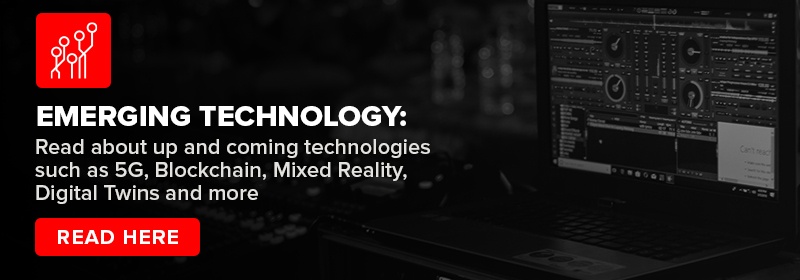
In the Ecosystm Predicts: The Top 5 Healthcare Trends in 2022 we have said that 2022 will be the year when we start seeing the second-order impacts of the pandemic and we will see healthcare providers address these impacts. This means an increase in tech adoption and a greater (and in some cases, renewed) interest in tech providers to focus on the Healthcare industry.
Last month, we saw announcements of Francisco Partners acquiring the healthcare data and analytics assets from the IBM Watson Health business unit. This was neither unexpected nor an isolated news – it follows a series of significant Healthcare tech news from last year.
Here are some announcements from 2021 that I feel give us an indication of where the Healthcare tech market is headed.
- Oracle’s acquisition of Cerner
- Microsoft’s continued focus on Healthcare with the Nuance acquisition
- The acquisition of athenahealth by private equity firms
- Examples of the focus on mental health such as the creation of Headspace Health
- The interest of consumer apps in Healthcare as witnessed by Peloton’s corporate wellness programme.
Read on to find out more about these announcements. And let me know what you think is the most interesting Healthcare tech announcement in the last year.
Download “Where is Healthcare Tech Headed?” slides as a PDF.

On 4 November Kyndryl completed the spin-off from IBM and began trading as an independent company on the New York Stock Exchange. It is effectively a USD 19 Billion start-up, and the industry will be tracking its journey keenly. Kyndryl has the ability to disrupt markets as it reinvents its business to embrace growth areas and help clients through their tech-led transformations.
Ecosystm Analysts Darian Bird, Peter Carr, Sash Mukherjee, Tim Sheedy, Ullrich Loeffler, and Venu Reddy comment on Kyndryl’s strategy going forward and the associated opportunities.
To download this Vendorsphere as a pdf for offline use, please click here.
The first impact of the pandemic and the disruption it caused, was organisations scrambling to empower their remote employees. Over the last 2 years, significant investments have been made on collaboration platforms and tools. Now organisations are having to work towards making these workplaces truly hybrid where organisations have to ensure that all employees get the same experience, irrespective of where they choose to work from.
In 2022, organisations will continue to invest in building the Digital Workplace and address the associated technology, people, and process challenges.
Read on to find out what Ecosystm Analysts, Audrey William, Tim Sheedy and Venu Reddy think will be the key trends for the Digital Workplace in 2022.
Click here to download Ecosystm Predicts: The Top 5 Trends for the Digital Workplace in 2022 as PDF

Last week AWS announced their plans to invest USD 5.3 billion to launch new data centres in New Zealand’s Auckland region by 2024. Apart from New Zealand, AWS has recently added new regions in Beijing, Hong Kong, Mumbai, Ningxia, Seoul, Singapore, Sydney and Tokyo; and are set to expand into Indonesia, Israel, UAE and Spain.
In a bid to deliver secure and low latency data centre capabilities, the infrastructure hub will comprise three Availability Zones (AZ) and will be owned and operated by the local AWS entity in New Zealand. The new region will enable local businesses and government entities to run workloads and store data using their local data residency preferences.
It is estimated that the new cloud region will create nearly 1,000 jobs over the next 15 years. They will continue to train and upskill the local developers, students and next-gen leaders through the AWS re/Start, AWS Academy, and AWS Educate programs. To support the launch and build new businesses, the AWS Activate program will provide web-based trainings, cloud computing credits, and business mentorship.
New Zealand is becoming attractive to cloud and data centre providers. Last year, Microsoft had also announced their Azure data centre investments and skill development programs in New Zealand. To support the future of cloud services and to fulfil the progressive data centre demands, Datagrid and Meridian Energy partnered to build the country’s first hyperscale data centre, last year. Similarly, CDC Data Centres have plans to develop two new hyperscale data centres in Auckland.
An Opportunity for New Zealand to Punch Above its Weight as the New Data Economy Hub

“The flurry of data centre related activity in New Zealand is not just a reflection of the local opportunity given that the overall IT Market size of a sub-5 million population will always be modest, even if disproportionate. Trust, governance, transparency are hallmarks of the data centre business. Consider this – New Zealand ranks #1 on Ease of Doing Business rankings globally and #1 on the Corruptions Perception Index – not as a one-off but consistently over the years.
Layered on this is a highly innovative business environment, a cluster of high-quality data science skills and an immense appetite to overcome the tyranny of distance through a strong digital economy. New Zealand has the opportunity to become a Data Economy hub as geographic proximity will become less relevant in the new digital economy paradigm.
New Zealand is strategically located between Latin America and Asia, so could act as a data hub for both regions, leveraging undersea cables. The recently initiated and signed Digital Economy Partnership Agreement between Singapore and New Zealand – with Chile as the 3rd country – is a testimony to New Zealand’s ambitions to be at the core of a digital and data economy. The DEPA is a template other countries are likely to sign up to and should enhance New Zealand’s ability to be a trusted custodian of data.
Given the country’s excellent data governance practices, access to clean energy, conducive climate for data centres, plenty of land and an exceptional innovation mindset, this is an opportunity for global businesses to leverage New Zealand as a Data Economy hub.“
New Zealand’s Data Centre Market is Becoming Attractive

“The hyperscale cloud organisations investing in New Zealand-based data centres is both a great opportunity and a significant challenge for both local data centre providers and the local digital industry. With AWS and Microsoft making significant investments in the Auckland region the new facilities, will improve access to the extensive facilities provided by Azure and AWS with reduced latency.
To date, there have not been significant barriers for most non-government organisations to access any of the hyperscalers, with latency of trans-Tasman already reasonably low. However, large organisations, particularly government departments, concerned about data sovereignty are going to welcome this announcement.
With fibre to the premise available in significant parts of New Zealand, with cost-effective 1GB+ symmetrical services available, and hyperscalers on-shore, the pressure to grow New Zealand’s constrained skilled workforce can only increase. Skills development has to be a top priority for the country to take advantage of this infrastructure. While immigration can address part of the challenge, increasing the number of skilled citizens is really needed. It is good to see the commitment that AWS is making with the availability of training options. Now we need to encourage people to take advantage of these options!“
Top Cloud Providers Continue to Drive Data Centre Investment

“Capital investments in data centres have soared in recent quarters. For the webscale sector, spending on data centres and related network technology account for over 40% of total CapEx. The webscale sector’s big cloud providers have accounted for much of the recent CapEx surge. AWS, Google, and Microsoft have been building larger facilities, expanding existing campuses and clusters, and broadening their cloud region footprint into smaller markets. These three account for just under 60% of global webscale tech CapEx over the last four quarters. The facilities these webscale players are building can be immense.
The largest webscalers – Google, AWS, Facebook and Microsoft – clearly prefer to design and operate their own facilities. Each of them spends heavily on both external procurement and internal design for the technology that goes into their data centres. Custom silicon and the highest speed, most advanced optical interconnect solutions are key. As utility costs are a huge element of running a data centre, webscalers also seek out the lowest cost (and, increasingly, greenest) power solutions, often investing in new power sources directly. Webscalers aim to deploy facilities which are on the bleeding edge of technology.
An important part of the growth in cloud adoption is the construction of infrastructure closer to the end-user. AWS’s investment in New Zealand will benefit their positioning and should help deliver more responsive and resilient services to New Zealand’s enterprise market.“

In this Ecosystm Insight, our guest author Randeep Sudan shares his views on how Cities of the Future can leverage technology for future resilience and sustainability. “Technology is not the only aspect of Smart City initiatives. Besides technology, we need to revisit organisational and institutional structures, prioritise goals, and design and deploy an architecture with data as its foundation.”

Earlier this year, Sudan participated in a panel discussion organised by Microsoft where he shared his views on building resilient and sustainable Cities of the Future. Here are his key messages for policymakers and funding agencies that he shared in that session.
“Think ahead, Think across, and Think again! Strategic futures and predictive analytics is essential for cities and is critical for thinking ahead. It is also important to think across through data unification and creating data platforms. And the whole paradigm of innovation is thinking again.”

We are seeing a rise in social and environmental consciousness – especially in the younger generation. Their awareness of human rights, the environment and inclusion is growing exponentially – they want to create impact. Organisations are being driven to develop and demonstrate an Environmental, Social and Governance (ESG) consciousness in their actions and investments.
In this Ecosystm Snapshot, we cover some of the recent examples of how governments and individual advocates are creating a difference; and how financial organisations and tech providers are embracing ESG.
Read how organisations such as Sun Cable, Equinix, Microsoft, NVIDIA, Prologis, Zensung, Ergo, Munich Re, Natwest, JPMorgan, Credit Suisse and others are working to make the world a better place.



